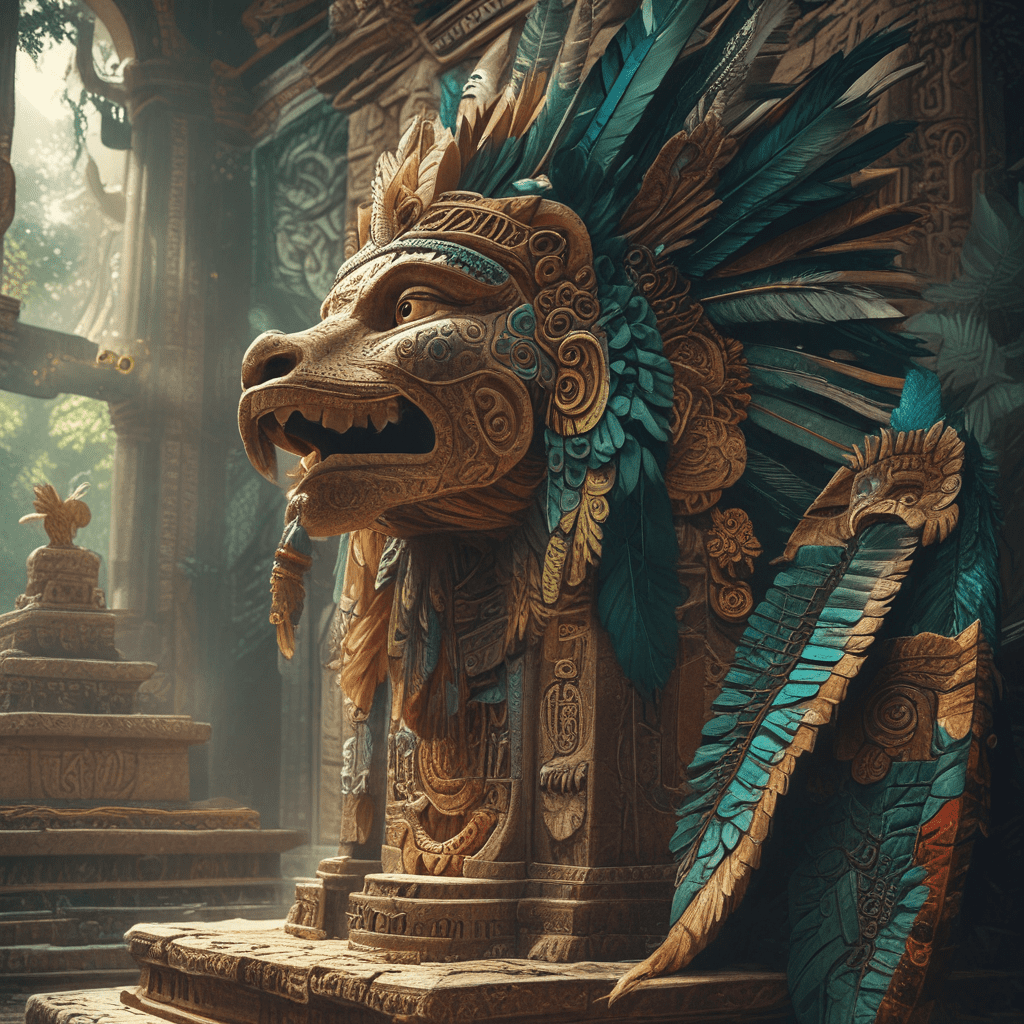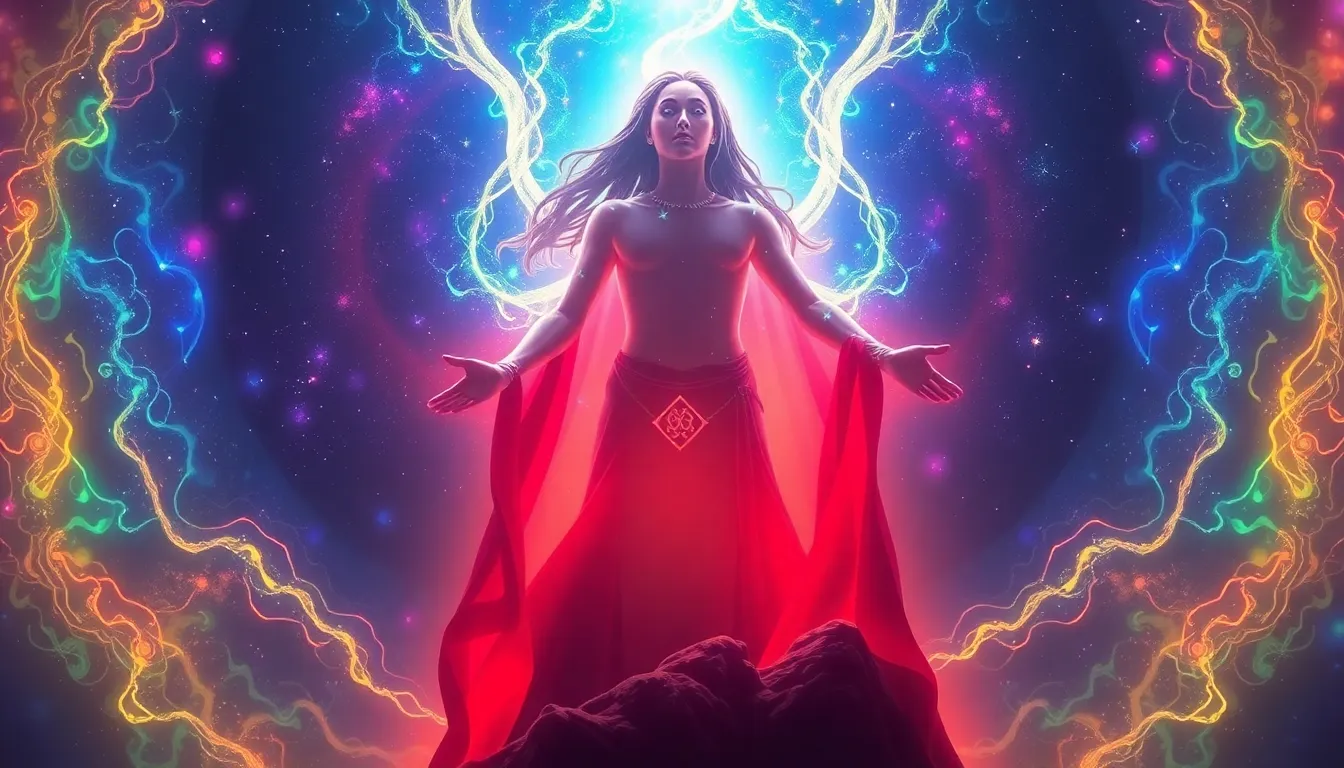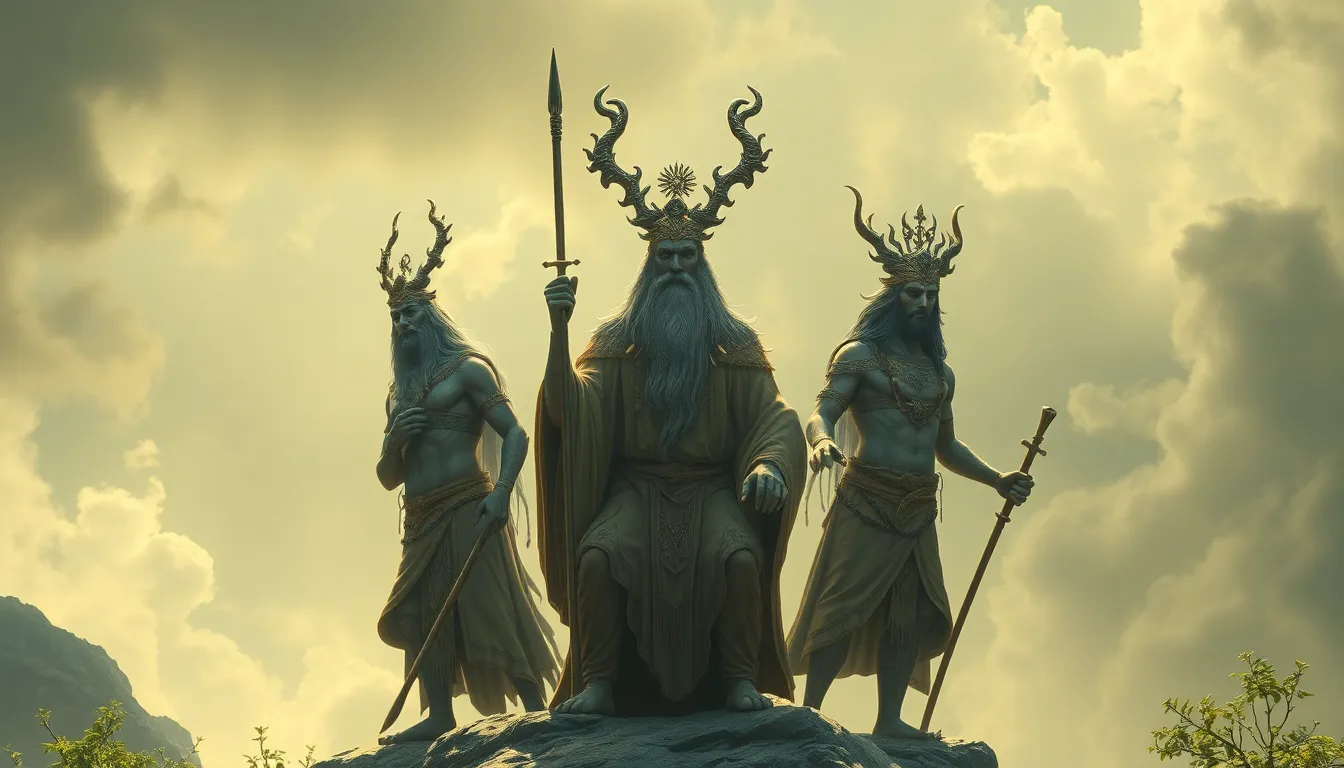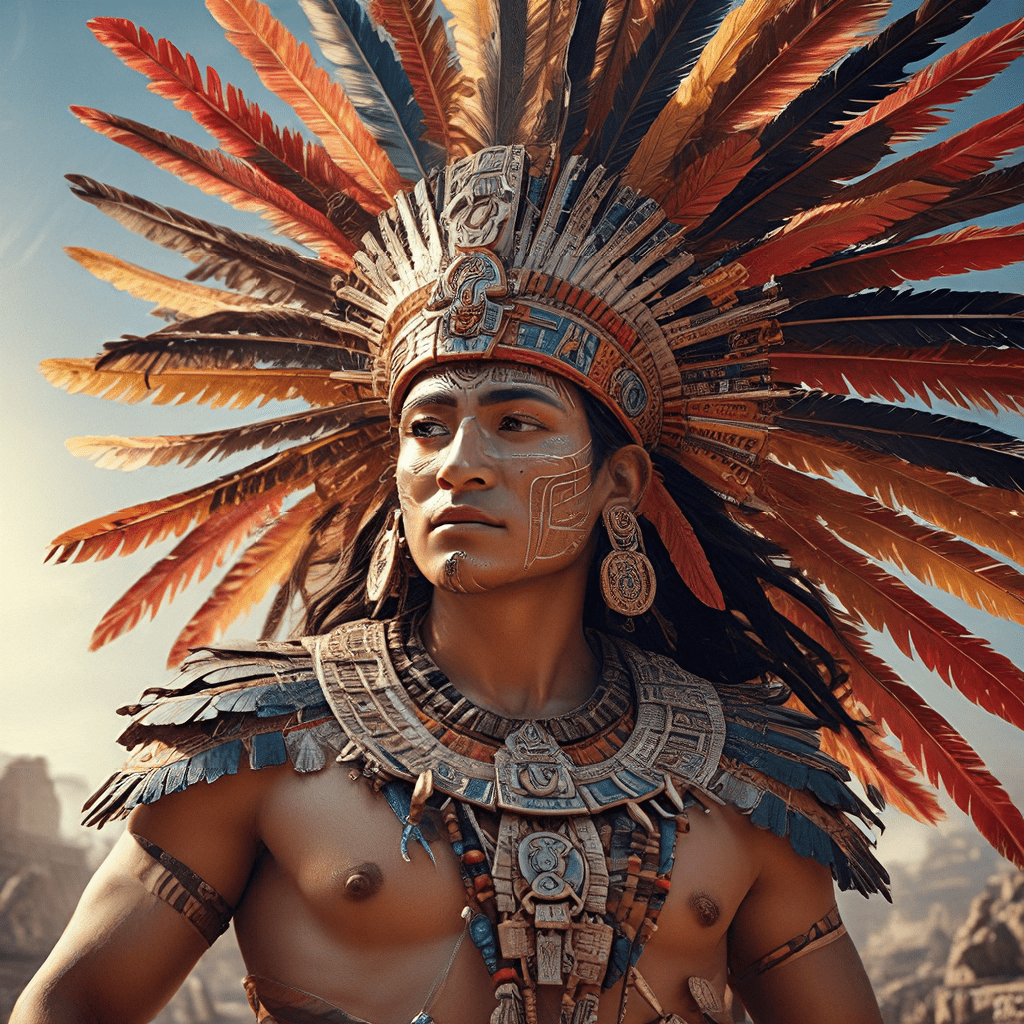The Myth of the Feathered Serpent: Quetzalcoatl's Legacy in Mayan Lore.
1. Quetzalcoatl: Myth and Reality
In Mesoamerican mythology, Quetzalcoatl stands as a towering figure, a deity intertwined with the creation, cultural development, and identity of numerous civilizations throughout the region. Beyond the realms of myth, the feathered serpent's legacy extends beyond mere religious significance. It delves into the intricate relationship between myth and history, leaving its mark on art, architecture, and social structures that endure to this day.
While details vary across cultures and time periods, the core essence of Quetzalcoatl remains constant: the embodiment of duality. His name itself speaks to this, translating from Nahuatl as "Feathered Serpent," a creature representing the union of heaven (feathers) and earth (serpent). This fundamental dichotomy resonates throughout Quetzalcoatl's various roles, from his association with both life-giving rain and destructive winds to his status as both creator and trickster deity.
This inherent ambiguity fuels much of the intrigue surrounding Quetzalcoatl. Was he a historical figure? A purely mythical creation? The question remains open to debate, with archaeological evidence, oral traditions, and written chronicles blending and blurring the line between the two. Regardless of his origins, Quetzalcoatl's influence remains undeniable, weaving through Mesoamerican history like threads through a tapestry.
2. The Feathered Serpent in Mayan Creation Myths
Within Maya mythology, Quetzalcoatl, known as Kukulkan, occupies a prominent space, playing instrumental roles in both creation stories and the deeds of cultural heroes. In one version of the Maya creation myth, Kukulkan, alongside the deities Heart of Sky and Tepeu, participate in the act of creation, shaping the world and its first humans from maize. In another, he emerges as one of the Hero Twins, vanquishing the underworld lords and restoring light.
However, the relationship between Quetzalcoatl and Maya mythology is far from straightforward. While some Maya groups embraced Kukulkan as a central deity, their relationship often differed from those of the central Mexican cultures that worshipped Quetzalcoatl. Maya art depicts him less frequently compared to other deities, suggesting a more limited role within their pantheon. Nevertheless, his presence within their creation stories and folklore underscores his lasting impact on Maya mythology.
3. Quetzalcoatl as a Cultural Hero and Deity
In addition to his role in creation stories, Quetzalcoatl is revered across Mesoamerica as a cultural hero. He is credited with introducing knowledge and civilization, from agriculture and crafts to astronomy and the calendar. This association with knowledge further emphasizes his dualistic nature: a deity both destructive and nurturing, responsible for both life and death, chaos and order.
This multifaceted persona contributes heavily to Quetzalcoatl's significance as a deity. He represents not simply a god of wind or vegetation, but an embodiment of the ongoing cycles of creation and destruction inherent to human existence. His influence transcended practical knowledge; he served as a guide, shaping and directing human behavior through both divine decree and moral example.
4. The Symbolism of Quetzalcoatl: Feathers, Serpents, and Duality
Throughout Mesoamerican art and architecture, Quetzalcoatl's image appears in numerous forms, each element carrying profound symbolic meaning. The serpent symbolizes the earth, fertility, and chthonic power, while the feathers represent the heavens, wisdom, and the celestial realm. Their union in the feathered serpent embodies this inherent duality, the connection between the material and immaterial, the human and the divine.
Beyond this central image, other elements surrounding Quetzalcoatl reinforce his multifaceted nature. He is frequently depicted wearing a mask or headdress with a serpent-shaped snout and adorned with quetzal feathers. These features serve as visual reminders of his liminal existence, bridging the realms of heaven and earth.
By unpacking the symbols associated with Quetzalcoatl, we gain deeper access to his significance within Mesoamerican belief. He becomes more than just a deity or cultural hero; he embodies the complex tapestry of existence itself, the constant interplay between opposing forces that define and drive both the natural world and human experience.
5. Quetzalcoatl and the Maya: Historical Connections and Interpretations
Despite their undeniable connection, the relationship between Quetzalcoatl and Maya culture remains shrouded in ambiguity. Archaeological evidence points to interactions between Maya groups and worshippers of Quetzalcoatl in central Mexico as early as the Classic Maya period. Maya cities such as Chichen Itza bear architectural styles and iconography reminiscent of central Mexican centers like Teotihuacan, further suggesting cultural exchange and influence.
Despite these connections, Maya interpretations of Quetzalcoatl differed from those prevalent in central Mexico. While both revered him as a deity with significant influence, the Maya focus tended to emphasize his association with rulership and political power rather than knowledge or civilization. This distinction highlights the regional variations within Mesoamerican belief and the ways in which deities could adapt to different cultural needs and understandings.
The Legacy of Quetzalcoatl: From Ancient Myths to Modern Culture
The legacy of Quetzalcoatl extends far beyond the confines of ancient Mesoamerican civilizations. His enduring influence continues to resonate across cultures, inspiring artists, writers, and philosophers. From Aztec murals and Mayan codices to contemporary sculptures and literary references, Quetzalcoatl's image continues to inspire awe and reflection.
This enduring relevance speaks to the universality of his symbolism. The feathered serpent embodies the fundamental questions of humanity, our existence within the natural world, and the eternal struggle between order and chaos within us all. Quetzalcoatl remains a timeless reminder, an enduring symbol, of both the fragility and the resilience of human life in the face of a constantly changing universe.
6. Theories of Quetzalcoatl's Origins and Influences
Theories abound regarding Quetzalcoatl's origins and influences. One prominent school of thought suggests he originated in Teotihuacan, a powerful central Mexican city that exerted significant cultural influence over much of Mesoamerica. Archaeological findings at Teotihuacan reveal extensive representations of the Feathered Serpent, lending credence to this hypothesis.
Others posit that Quetzalcoatl's roots lie within the Olmec civilization, an earlier Mesoamerican culture whose artistic motifs include feathered serpent imagery. This perspective emphasizes the long-standing cultural and religious continuity across Mesoamerica, with Quetzalcoatl evolving and adapting over time.
Further theories explore possible connections with deities from other regions, such as the South American Viracocha or the Polynesian Ku'ka'ilimoku. These comparisons highlight the potential for cross-cultural exchange and the diffusion of religious ideas across vast distances.
Despite ongoing debate, the evidence points to a complex interplay of influences shaping the figure of Quetzalcoatl. He likely emerged from the fusion of various pre-existing deities and religious concepts, evolving and adapting as he spread across different regions and cultures.
7. The Continuing Significance of Quetzalcoatl in Mayan Identity
Despite the passage of centuries and the arrival of new belief systems, Quetzalcoatl continues to hold significance within Mayan identity. In contemporary Maya communities, he remains a powerful symbol of ancestral heritage and cultural resilience.
Present-day Maya artists continue to draw inspiration from Quetzalcoatl's image and symbolism. Murals, sculptures, and even traditional textiles often feature the Feathered Serpent, reflecting his enduring presence within the cultural landscape. Moreover, contemporary Maya communities continue to celebrate festivals and ceremonies associated with Quetzalcoatl, demonstrating the enduring connection between the ancient deity and modern-day cultural practices.
This continued relevance speaks to the timeless nature of Quetzalcoatl's message. His story serves as a reminder of the cyclical nature of existence, of the constant interplay between creation and destruction, and the ongoing quest for balance within oneself and the world.
8. Modern Depictions and Interpretations of Quetzalcoatl
In contemporary culture, Quetzalcoatl has transcended his Mesoamerican origins, finding expression in diverse artistic mediums and intellectual discourse. Modern artists and writers continue to find inspiration in his complex symbolism and enduring legacy.
From sculptures and murals to novels and films, Quetzalcoatl's image appears as both homage to his ancient roots and reinterpretation for a modern audience. These contemporary expressions explore his multifaceted nature, delving into themes of duality, transformation, and the search for meaning in the face of a changing world.
Furthermore, scholars continue to study and analyze Quetzalcoatl's myth, shedding new light on his historical significance and cultural impact. This ongoing engagement with his story ensures its continued relevance, offering fresh perspectives on timeless questions of human existence and our relationship with the natural world.
9. The Feathered Serpent: A Timeless Symbol of Transformation and Renewal
Quetzalcoatl, the Feathered Serpent, stands as a testament to the enduring power of myth and its ability to transcend cultural boundaries. His image continues to captivate and inspire, reminding us of the cyclical nature of existence, the constant dance between order and chaos, and the potential for transformation within ourselves and the world around us.
His legacy serves as a bridge connecting past, present, and future. He embodies the enduring human search for meaning in the face of uncertainty, the quest for balance amidst constant change. As the Feathered Serpent continues to soar across the landscape of human imagination, he reminds us of our own capacity for transformation and renewal, our ability to navigate the ever-shifting currents of life with resilience and grace.
FAQ:
What is the significance of Quetzalcoatl's name?
Quetzalcoatl's name is derived from the Nahuatl language, meaning "Feathered Serpent." This name reflects the deity's dualistic nature, representing the union of heaven (feathers) and earth (serpent).
How is Quetzalcoatl depicted in Maya art and mythology?
In Maya art, Quetzalcoatl, known as Kukulkan, is depicted as a feathered serpent with human-like features. He is often associated with rulership, knowledge, and the morning star.
What is Quetzalcoatl's connection to the Maya creation myth?
In Maya mythology, Kukulkan plays a role in the creation of the world and humans, alongside the deities Heart of Sky and Tepeu. He is also associated with the Hero Twins, who vanquish the underworld lords.
How does Quetzalcoatl's legacy continue to influence contemporary culture?
Quetzalcoatl's image and symbolism continue to inspire contemporary artists, writers, and scholars. He is seen as a symbol of transformation, resilience, and the interconnectedness of all living things.



